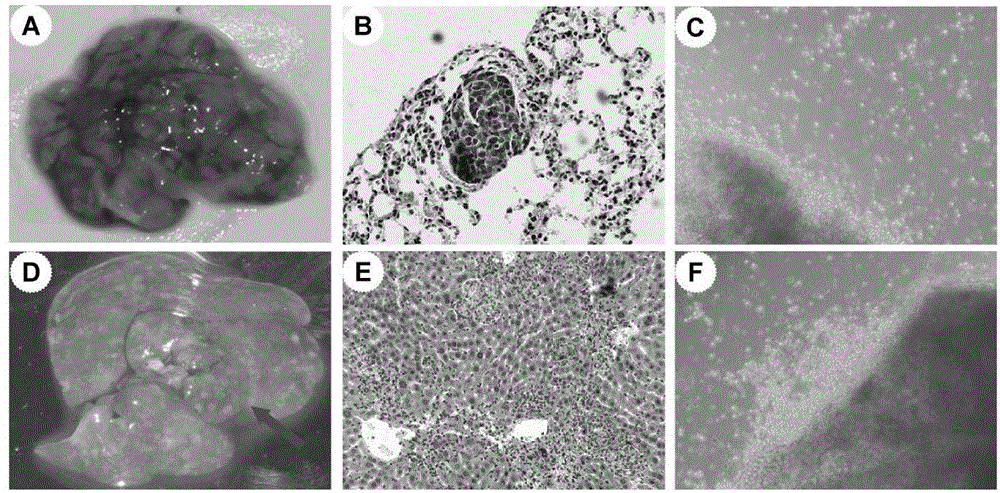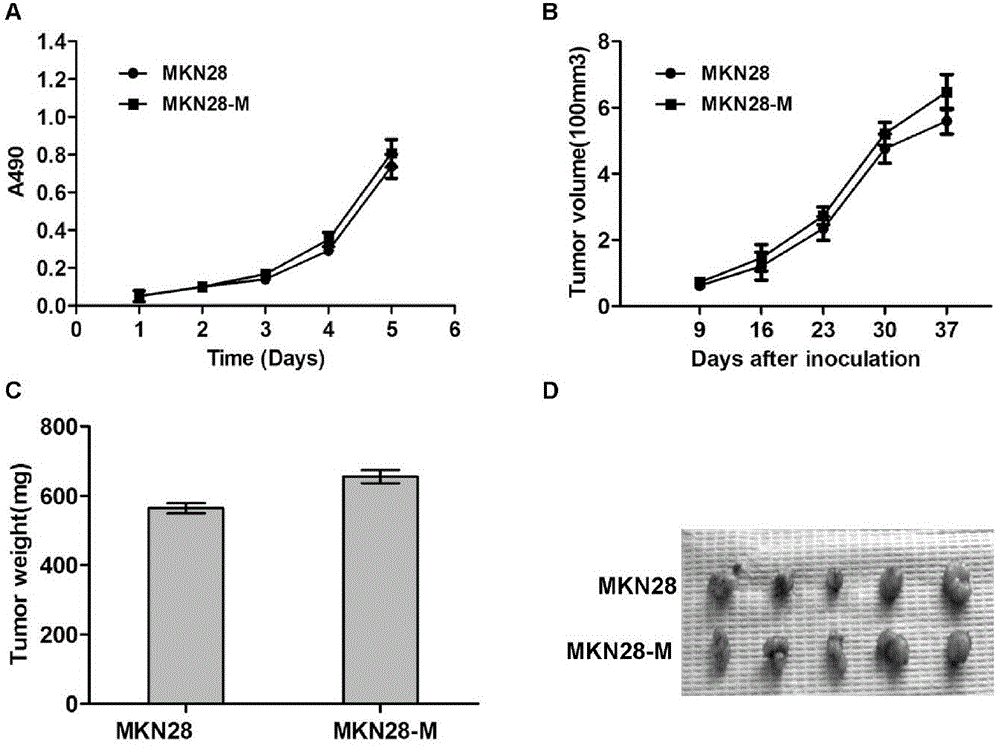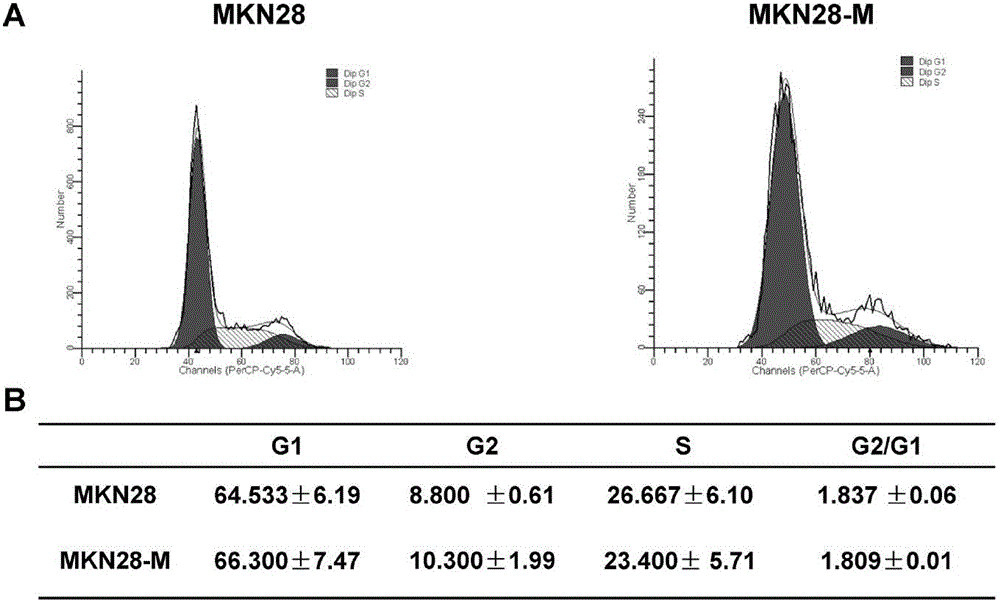A pair of human stomach cancer cell lines having high metastasis towards livers and lungs and an establishing method thereof
A gastric cancer cell line and high metastasis technology, applied in the field of human gastric cancer cell line and its establishment, can solve the problems of low metastasis rate and long modeling period, and achieve the effects of high degree of malignancy, short experimental period and high organ metastasis rate.
- Summary
- Abstract
- Description
- Claims
- Application Information
AI Technical Summary
Problems solved by technology
Method used
Image
Examples
Embodiment 1
[0026] Example 1 Screening and establishment of gastric cancer cell lines with high metastatic potential
[0027] Use gastric cancer cell line for migration experiment (see 1.1 for specific steps), obtain cells that do not penetrate the membrane and cells that penetrate the membrane, and then collect the cells that penetrate the membrane, and then perform the migration experiment. The cells that do not penetrate the membrane and the cells that penetrate the membrane will be separated. Membrane cells, we still only collect the cells that penetrate the membrane, expand the culture, and then perform the migration experiment. Do this 10 times, and repeatedly use the migration experiment to screen the cells that penetrate the membrane each time to obtain a subgroup of cells with strong migration ability. Then use cell subsets with strong migration ability to perform invasion experiments (see 1.2 for specific steps), collect cells that invade and penetrate the membrane each time, and pe...
Embodiment 2
[0032] Example 2. Identification of biological characteristics of gastric cancer cell lines with high metastatic potential
[0033] 2.1 Determination of cell growth curve (MTT experiment)
[0034] A. Inoculate cells: Digest the cells with digestion solution and prepare a single cell suspension with RPMI-1640 medium containing 10% FBS. 3 ~10 4 Cells were seeded in a 96-well culture plate with a volume of 200 μl per well. There were 3 duplicate wells for each cell and 7 96-well plates were seeded; a blank control well was set parallel to the experimental wells without cells and only medium. In the final color comparison, adjust the zero with a blank hole.
[0035] B Cultivate cells: put the culture plate into CO 2 Incubator, at 37℃, 5% CO 2 And under saturated humidity conditions, cultivate for 24 hours;
[0036] C is colored: after 24 hours of culture, add 20μl of MTT solution (5mg / ml) to each well, continue incubating at 37°C for 4 hours, stop the culture, carefully aspirate the cultu...
Embodiment 3
[0056] Example 3 Identification of biological stability of gastric cancer cell lines with high metastatic potential
[0057] Use RPMI-1640 medium containing 10% FBS at 37℃, 5% CO 2 Under saturated humidity conditions, the gastric cancer cell lines with high metastatic potential MKN28-M and SGC7901-M were successively subcultured and cultured for 30 generations, and then tested for their in vitro migration and invasion ability according to the methods of 1.1 and 1.2, and tested their nakedness according to the method of 2.6. Transfer ability in mice.
[0058] The results show that:
[0059] 1. Highly metastatic cell lines isolated from liver and lung metastases
[0060] After the nude mice were injected with tumor cells subcutaneously, they were sacrificed when they were obviously exhausted and were about to die. The liver and lungs were separated. Multiple small gray-white miliary nodules were seen in the liver and lungs. HE staining of tissue sections indicated tumor metastases. Cu...
PUM
 Login to View More
Login to View More Abstract
Description
Claims
Application Information
 Login to View More
Login to View More - Generate Ideas
- Intellectual Property
- Life Sciences
- Materials
- Tech Scout
- Unparalleled Data Quality
- Higher Quality Content
- 60% Fewer Hallucinations
Browse by: Latest US Patents, China's latest patents, Technical Efficacy Thesaurus, Application Domain, Technology Topic, Popular Technical Reports.
© 2025 PatSnap. All rights reserved.Legal|Privacy policy|Modern Slavery Act Transparency Statement|Sitemap|About US| Contact US: help@patsnap.com



